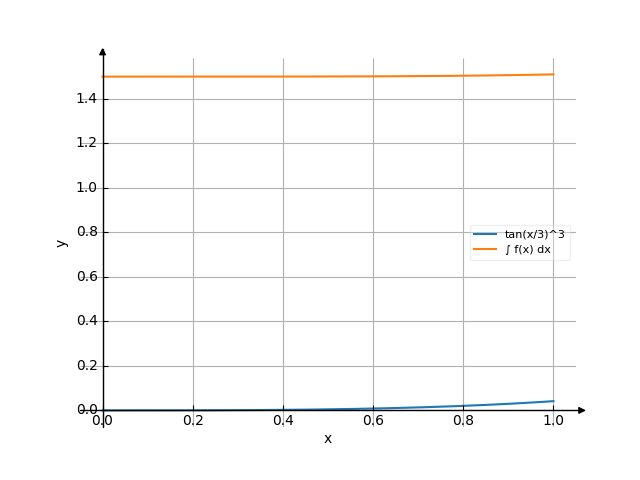Integral of tg^3(x/3) dx
The solution
1 / | | 3/x\ | tan |-| dx | \3/ | / 0
Integral(tan(x/3)^3, (x, 0, 1))
-
Rewrite the integrand:
-
There are multiple ways to do this integral.
Method #1
-
Let .
Then let and substitute :
-
The integral of a constant times a function is the constant times the integral of the function:
-
Let .
Then let and substitute :
-
Rewrite the integrand:
-
Integrate term-by-term:
-
The integral of a constant is the constant times the variable of integration:
-
The integral of a constant times a function is the constant times the integral of the function:
-
The integral of is .
So, the result is:
-
The result is:
-
-
Now substitute back in:
-
So, the result is:
-
Now substitute back in:
Method #2
-
Rewrite the integrand:
-
Integrate term-by-term:
-
Let .
Then let and substitute :
-
The integral of a constant times a function is the constant times the integral of the function:
-
The integral of a constant is the constant times the variable of integration:
So, the result is:
-
Now substitute back in:
-
-
The integral of a constant times a function is the constant times the integral of the function:
-
Rewrite the integrand:
-
Let .
Then let and substitute :
-
The integral of a constant times a function is the constant times the integral of the function:
-
The integral of is .
So, the result is:
-
Now substitute back in:
-
-
So, the result is:
-
The result is:
Method #3
-
Rewrite the integrand:
-
Integrate term-by-term:
-
Let .
Then let and substitute :
-
The integral of a constant times a function is the constant times the integral of the function:
-
The integral of a constant is the constant times the variable of integration:
So, the result is:
-
Now substitute back in:
-
-
The integral of a constant times a function is the constant times the integral of the function:
-
Rewrite the integrand:
-
Let .
Then let and substitute :
-
The integral of a constant times a function is the constant times the integral of the function:
-
The integral of is .
So, the result is:
-
Now substitute back in:
-
-
So, the result is:
-
The result is:
-
-
Add the constant of integration:
The answer is:
/ / 2/x\\ 2/x\ | 3*log|3*sec |-|| 3*sec |-| | 3/x\ \ \3// \3/ | tan |-| dx = C - ---------------- + --------- | \3/ 2 2 | /
3 3
- - + 3*log(cos(1/3)) + -----------
2 2
2*cos (1/3)
=
3 3
- - + 3*log(cos(1/3)) + -----------
2 2
2*cos (1/3)

Use the examples entering the upper and lower limits of integration.

![Find the integral of y = f(x) = tg³(x/3) dx (tg cubed (x divide by 3)) - with detailed solution [THERE'S THE ANSWER!] tg^3(x/3)](/media/krcore-image-pods/176/hash/indefinite/e/1f/9d420e14a5cca2d7102e0ac000c95.png)
 Integral of 2x(x^2+1)
Integral of 2x(x^2+1)
 Integral of (1+2x^2)/(x^2(1+x^2))
Integral of (1+2x^2)/(x^2(1+x^2))
 Integral of 1/(2+cosx)^2
Integral of 1/(2+cosx)^2